DJI
DJI Mavic 2 Zoom: 2x optical zoom that makes the difference
Aprox. 1349€ - see price -
See specificationsDJI offers not one, but two models of Mavic 2 to take over from its excellent Mavic Pro. If our test of the Mavic 2 Pro especially revealed a great potential in photo, this Zoom version stands out for its part in video.
Positive points
Good image quality.
Very interesting optical zoom in video.
Many useful and well thought out flight modes.
Obstacle detection on all sides.
Easy and safe flight / Stability.
Excellent build quality.
Still compact, although a bit larger than the Mavic Pro.
Good autonomy.
Bad points
Rechargeable batteries only via the proprietary charger.
Fairly high introductory price.
Optical zoom camera with small sensor or 1 "20 Mpx sensor, choose (Mavic 2 Zoom or Mavic 2 Pro).
Problems with updates via the smartphone detected by several users, including us.
Android application still not translated into French!
Our review
Presentation
Forget the 1 "20 MP sensor of the Hasselblad camera which the Mavic 2 Pro benefits from; the Mavic 2 Zoom retains the smallest 1 / 2.3" and 12 MP sensor of the Mavic Pro, but can count on an optical zoom 2x! Apart from this difference in camera, the Mavic 2 are technically identical, to within 2 grams, and this is why we invite you first to read the test of the Mavic 2 Pro to avoid here an almost complete repetition of the different paragraphs concerning handling, theft and autonomy, practically identical for the two devices. So here we will focus on their differences, especially in terms of image quality.
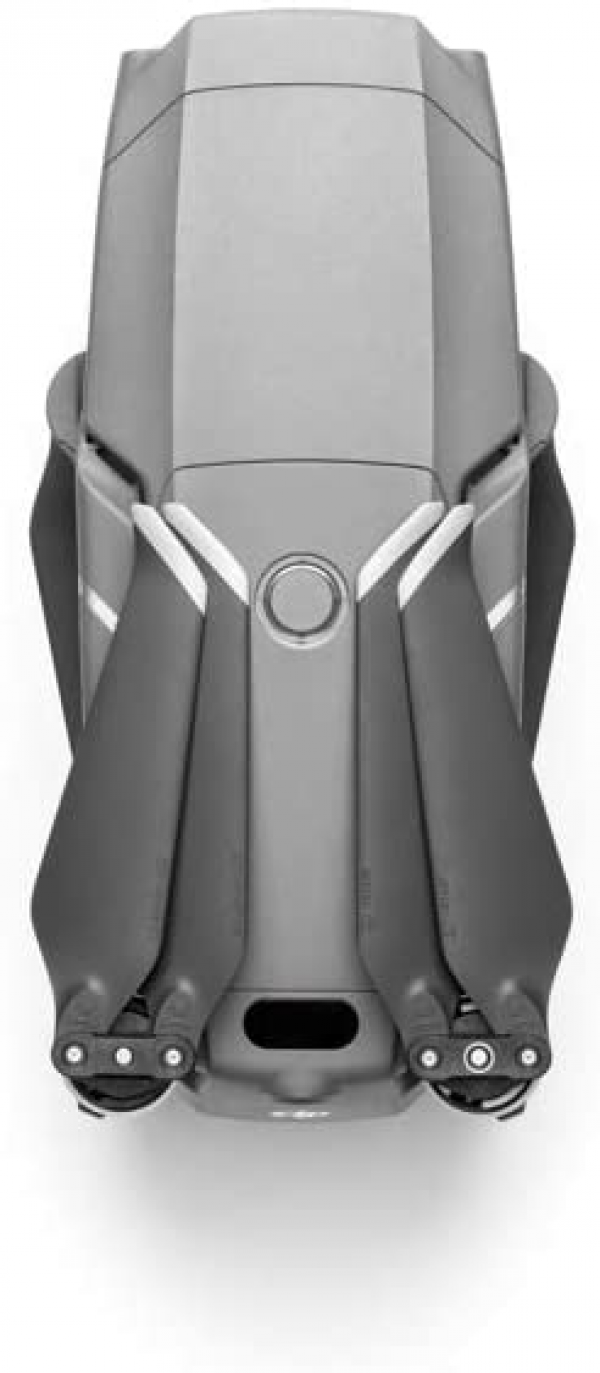
Getting started
905 g for the Mavic 2 Zoom, 907 g for the Mavic 2 Pro, we cannot say that this will change anything and we will have to comply with the legislation applied to drones over 800 g (see box)). The two quadrotors are almost identical to their dark gray color, and only their camera changes.
Excellent manufacturing quality, robustness, compactness when folded and small radio control a little improved since the first version ... so many good points that make Mavic 2 devices very convincing.
On the other hand, who says identical technical basis also says the same problems with updates with this Mavic 2 Zoom which has been somewhat recalcitrant with some of our smartphones, requiring to go through a computer to apply the latest firmware of the machine.
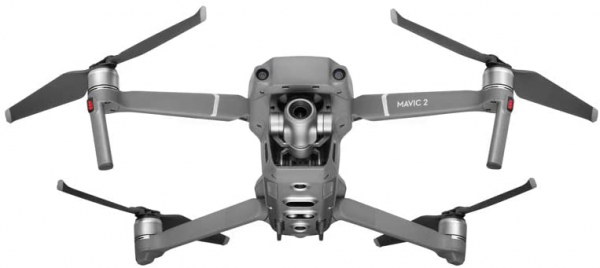
Flight
Again, no change from the Mavic 2 Pro, the device being identical and behaving in exactly the same way. We appreciate the simplicity of piloting and all the security measures implemented by DJI and based on a myriad of sensors. What focus on the framing, which is all the more important here since by using the zoom, we perceive less the environment of the drone on the screen. The application interface is however a little more loaded due to the display of the focal length on the screen (optical zoom).
The first major difference between the Mavic 2 Pro and Zoom is in their flight modes. The Mavic 2 Zoom is indeed capable of automatically achieving a vertigo effect, also called Dolly Zoom. It relies for this on its optical zoom. In practice, all you have to do is select a subject on the screen for the camera to focus on it and start moving away from it while zooming in on it. This creates striking perspective and distortion effects without loss of quality (Ultra HD from start to finish) thanks to optical zoom - the effect can be produced from Ultra HD video by digitally zooming in the image, for example, but at the cost of a reduced final image definition (at Full HD, for example).
If not always have the same automated flight modes as on the Mavic 2 Pro, that is to say a beautiful panel of cinematographic effects at hand, without the need to be an ace of piloting or to leave the commands to a cameraman to realize them.
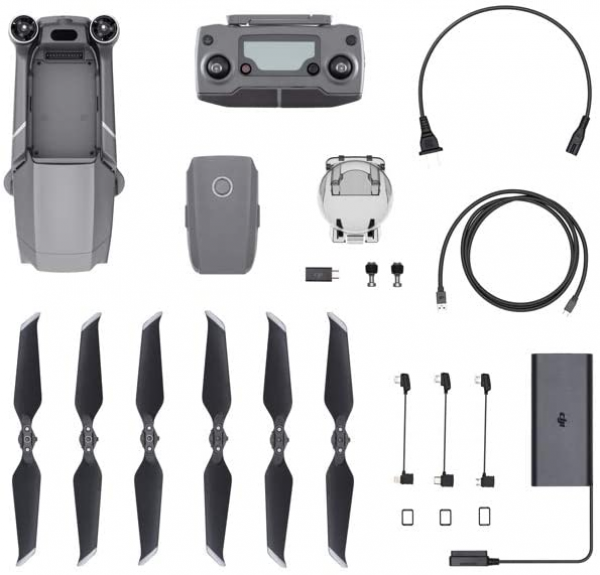
Image quality
If we have to choose between Mavic 2 Pro and Mavic 2 Zoom, it's really the image quality they produce that can make us lean towards one or the other model. We saw it in the test of the Mavic 2 Pro and our photo Lab news, the Hasselblad camera with CMOS sensor of 1 inch and 20 Mpx allows to obtain beautiful images, well defined and with a fairly clean ISO rise. Obviously, with its small sensor of 1 / 2.3 inch and 12 Mpx, the Mavic 2 Zoom is more difficult in the photo part. We can still capture beautiful images and DJI thought of exploiting the 2x zoom of his device by proposing a "Super Resolution" photo mode which compensates a little for the weaker definition of his sensor.
It is thus capable of creating an image of 48 Mpx from 9 photos taken with the focal length of 48 mm (that is to say with 2x optical zoom), with a framing equivalent to that which one would obtain with the 24 mm focal length ( equivalent to a photo without zoom). Interesting to capture landscapes, for example, provided that there are no moving elements during the capture, as for a panorama.
Despite this, in terms of aerial photography, there is no debate, the Mavic 2 Pro dominates the Zoom of the head and shoulders.
So why choose a Mavic 2 Zoom? For its video qualities, quite simply, and not simply because of its lower price! Indeed, it is really the 2x zoom which gives all its meaning to the Mavic 2 Zoom and allows it to pull out of the game. As we saw during its test, the Mavic 2 Pro unfortunately does not take full advantage of its 20 MP sensor on video, which limits its technical superiority. Indeed, the scaling in Ultra HD is done at the price of a loss of sharpness and only the Ultra HD HQ mode allows to enjoy the best possible sharpness with this sensor (at the price of a drastic restriction of the angle of view). Certainly, the better dynamics and greater sensitivity of the latter have advantages when it comes to filming in difficult light conditions (backlight, sunrise or sunset ...), but the video result remains finally quite close to that of the Zoom in real shooting conditions (in flight and not in the lab).
However, the optics of the Mavic 2 Zoom offer very interesting creative possibilities for a videographer. In addition to its wider field of vision, 83 ° (24 mm) against 77 ° (28 mm) on the Mavic 2 Pro, we of course think of its 2x optical zoom (passing to 4x if we use the digital zoom in going from Ultra HD definition to Full HD), allowing rapid framing changes and avoiding having to get too close to your subject. Very useful to remain discreet with a device which is precisely not because of the noise it emits. By using the zoom, we also gain parallax effects which are very useful for detaching the background from the subject more clearly.
In addition, the Mavic 2 Zoom can count on an automatic focus combining phase and contrast detection and proving to be quite fast. Combined with an optional automatic tracking system, it keeps subjects sharp all the time, which is particularly useful when using the zoom. The focusing can nevertheless be done manually if necessary.
Ultimately, what can still tip the balance in favor of the Mavic 2 Pro on the video front, it is its 10 bit recording capacities in Dlog-M and HDR, as well as its variable aperture which offer more control. on rendering videos.
We were finally able to test the latest DJI drone, the Mavic 2 Pro. And to better analyze the contribution of its larger and defined sensor (Cmos ...
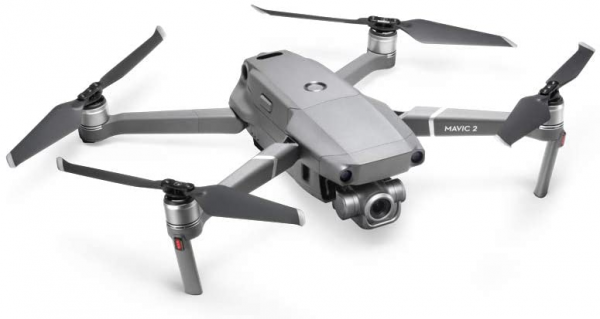
Autonomy
No really noticeable change in terms of autonomy, the Mavic 2 Zoom also takes almost 25 minutes in "normal" flight. Sufficient to make beautiful shots taking into account the time to return to the initial position.
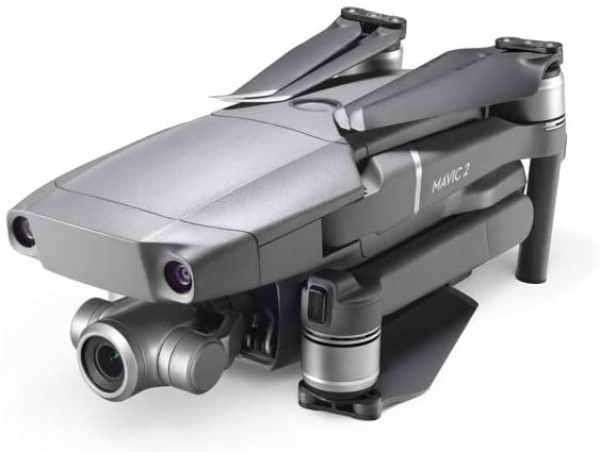
Conclusion
Even easier to fly and still easy to transport despite a slightly larger size, the Mavic 2 Zoom easily outperforms the Mavic Pro, our favorite flying camera of 2016. If it does not progress on the strict plan of quality image, failing to take advantage of the new 1 "20 Mpx sensor reserved for the Mavic 2 Pro, it can count on its optical zoom to make the difference in video by offering more cinematographic possibilities. If you make more videos than aerial photos and don't worry about the 10- bit recording reserved for the Pro, so we are more likely to recommend this Mavic 2 Zoom.
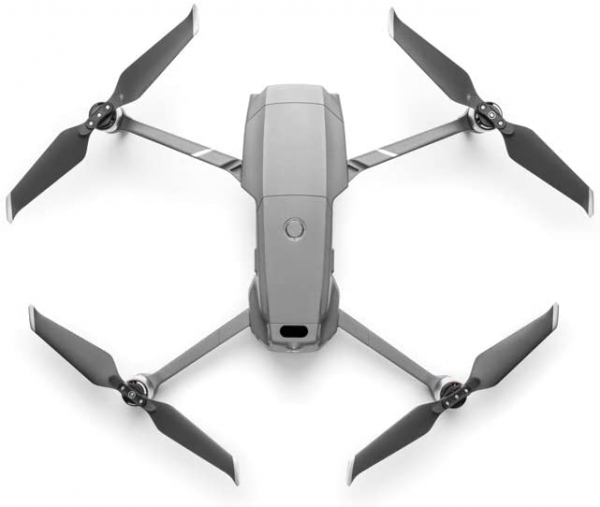
Specifications
Reviews

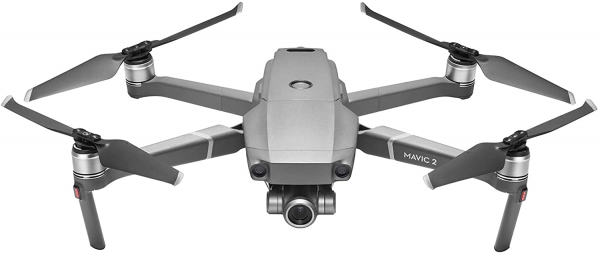
Awesome!
DJI made it again. The new Mavic 2 Zoom has everything you will need, from using it as a hobby to a professional piece of equipment. Nowadays, this drone is at the head of the industry with all the specs that it includes. The Zoom version includes the new zoom feature that can be applied to many things, while the Pro version has a more advanced camera that has slightly better quality and fewer features.
Here are some of the specs that are really going to make the difference for you to decide between the two versions:
MAVIC 2 PRO:
CAMERA (here is where the Pro has a better quality if you are a professional video editor):
Sensor: 1 ”CMOS
Aperture: f / 2.8 – f / 11
Video:
100-6400
Photo:
100-3200 (auto)
100-12800 (manual)
Shutter Speed: Electronic Shutter: 8–1 / 8000s
Still Image Size: 5472 × 3648
Still Photography Modes: Single shot
Video Resolution 4K, 2.7K, FHD (slowmo)
Max Video Bitrate 100Mbps
Color Mode: Dlog-M (10bit), HDR video support (HLG 10bit)
MAVIC 2 ZOOM CAMERA
Sensor: 1 / 2.3 "CMOS
Effective Pixels: 12 million
Lens: FOV: about 83 ° (24 mm); about 48 ° (48 mm)
35 mm Equivalent Format: 24-48 mm
Aperture: f / 2.8 (24 mm) –f / 3.8 (48 mm)
Shooting Range: 0.5 m to ∞
ISO Range: video: 100-3200; photo: 100-1600
Still Image Size: 4000 × 3000 (12mp)
Video Resolution 4K: 3840 × 2160 24/25 / 30p
2.7K: 2688 × 1512 24/25/30/48/50 / 60p
FHD: 1920 × 1080 24/25/30/48/50/60 / 120p
Max Video Bitrate: 100Mbps
Color Mode: D-Cinelike
Photo Format: JPEG / DNG (RAW)
Video Format: MP4 / MOV (MPEG-4 AVC / H.264, HEVC / H.265)
Stabilization: 3-axis (tilt, roll, pan)
AIRCRAFT (same in both versions)
Takeoff Weight: Mavic 2 Pro: 907g Mavic 2 Zoom: 905g
Voltage: 15.4 V
Operating Temperature Range: 0 ℃ - 40 ℃
Dimensions folded:
214 × 91 × 84 mm (length × width × height)
Unfolded:
322 × 242 × 84 mm (length × width × height)
Diagonal Distance: 354 mm
Max Speed: 72 kph
Max Flight Time: 31 minutes
Max Flight Distance: 18 km
Max Wind Speed Resistance: 38 kph
Operating Temperature Range -10 ° C - 40 ° C
Transmission: GPS + GLONASS
Internal Storage: 8 GB
SENSING SYSTEM:
Omnidirectional Obstacle Sensing (all directions)
INTELLIGENT FLIGHT BATTERY
Capacity: 3850 mAh
REMOTE CONTROLLER
Max Transmission Distance: FCC: 8000m CE: 5000m
Concluding,
If you are a professional photographer or videographer and you edit your footage in postproduction, the MAVIC 2 PRO is going to be your option.
If you are a person that doesn't care that much of postproduction and just wants to have fun with your drone, you should get the MAVIC 2 ZOOM because of its new zoom feature and because it's also cheaper at price point.
If you are upgrading from a Phantom, Parrot ... and just want to get something really different in terms of portability and features you should get the MAVIC 2 (Zoom or Pro version).
If you are upgrading from a MAVIC Pro (1), I don't think that you are going to find a lot of new things on the Mavic 2 Zoom because it has the same sensor. You should get the Mavic 2 Pro to really notice the camera quality.
This is all, I hope that now you really know which one to choose.
Best drone I’ve ever had!
I needed a compact drone for my trip to Australia and this was perfect! It also has a zoom lens so I could be a safe distance from Aussie wildlife and such. The dolly zoom feature is my favorite! It is a small camera so the quality isn't as good as my previous phantoms but it still looks fantastic!
Truly a Great Product!
I purchased several weeks ago and have not been disapponted. I also have the Mavic Air and can attest that this by far is superior in every way. The MAVIC Air is nice but is more designed for quick fun. The big win for me with the Pro is the extended flying time / battery life, remote control, connectivity, and the zoom lens. I took this platform to the beach on a trail run and averaged approximately 28 mins of flying time in high winds. It's truly stable and offers some great features. I'm still testing but thus far, I am very pleased. One major area needing improvement is the color as you can lose track your sight-line unless you have some type of marker on it (ie reflective streamers) as the beacon markers are very hard to see at a distance. This product is as advertised. Hope this helps!
Best DJI drone I’ve owned! Happy Flying!!
I love my New Zoom! I sold my DJI Phantom 3 Pro and my DJI Spark to get this one. I love the Zoom !!! It's not only easy to fly, but it takes amazing video and pictures! I can't wait to use it at our summer camp and to take it hunting! I want to film some hunts but will need to figure out how to do it w / out spooning the quarry! The clarity when I put it on my laptop was mind blowing !!!!! I haven't shot the videos that I want to yet but just so simple shots around the house, but I'm stunned by how amazing the colors pop and the incredible clarity. The Zoom option is the reason I bought it and I was really pleased w / how much it can zoom in! I often will forget I have it on and only later when descending realize how far I'm up! It is the best DJI drone I've owned and I think their best product out thus far! If your thinking about it, do it! I promise you'll won't be disappointed and it will blow you away w / the pics and videos you can take! Happy flying
No flaws yet
I have had my Mavic 2 Zoom for a couple of months, and have had absolutely no problems at all. I spent a lot of time watching tutorial videos on the Internet before making this purchase, so I think I was already pretty familiar with how the drone operated. I would encourage anybody contemplating making this purchase to do the same. This is my second DJI drone. I also have a Phantom 3 Standard. Needless to say, this Mavic 2 Zoom is in a whole different league. I fly drones purely for fun. I have no intention of doing anything commercial with them. This is just a fun hobby for me, and this drone does not disappoint.
For me it is perfect but read on
This is my second drone. My first was a Spark which my son has “inherited” merry Christmas. To start with I live in the middle of nowhere at high elevation. So I'm not effected by the NFZ zones that have plagued others. While we should never fly near airports, etc. I understand their plight. I'd also love to fly into the clouds, but the 400 ft ceiling is understandable. Registration with the FAA was quick, easy and only $ 5.
I have flown for a few weeks now and have been having a great time. Only gone about 2.3 miles max distance to date, but with no real signal loss. Primarily I'm using 2.7k 60 FPS or 4k 30fps and the video quality is excellent when played directly into my 4K Sony tv. Not too bad on an iMac either. I have flown in winds up to almost 30 mph and temperatures in to the teens with no major problems, other than my fingers wanting to fall off. Lowest battery voltage was about 3.7 in the coldest temperatures. You will get attitude warnings at higher wind speeds, making your front sensors worthless, so fly with care. I love the zoom feature even if the picture quality is a little lower than the Pro. I'm not a professional photographer and this one is $ 200 less at the moment.